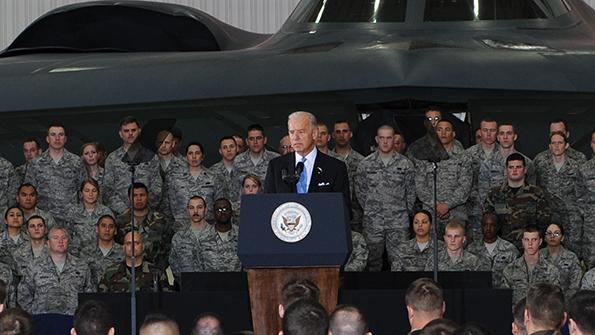
The 2020 U.S. presidential election will be competitive and probably will be decided by the electoral college votes of 6-8 states. Although COVID-19 has dominated thinking about defense, it is a good time for defense planners, analysts and management to start considering what the administration of presumptive Democratic nominee Joe Biden could mean for the sector in 2021-24.
A Biden presidency and Democratic control of Congress is not likely to be a negative for defense, but it would introduce some new factors and issues. If Biden wins in November, Democrats could also regain a majority in the Senate and retain the House majority. If that happens, the 2022 midterm election will be the next major marker, because midterm elections typically are seen as a public verdict on how the president is doing.
As can be expected based on the vast majority of major election campaigns, Biden’s team has not put forth much hard budget data or program specifics yet. Biden’s campaign website under “Defend Our Vital Interests” states: “We have the strongest military in the world—and as president, Biden will ensure it stays that way. The Biden administration will make the investments necessary to equip our forces for the challenges of the next century, not the last one.” He will also “end forever wars” in Afghanistan and the Middle East, it states.
Biden’s advisors are largely centrists who served in the Obama administration. These include Tony Blinken, Jake Sullivan, Brian McKeon, Jeffrey Prescott, Julianne Smith and other former Pentagon officials. Some policies conceived when Biden was vice president—the “pivot” to the Asia-Pacific region, the “third offset strategy” and a refocus on Europe after the Russian seizure of Crimea-—have been sustained, though relabeled, by the Trump administration. Other current policies are likely to be altered, including “maximum pressure” on Iran, the transactional view of alliances, overall absence of U.S. leadership on core global issues and movement away from current arms control agreements.
China also will remain a critical defense factor, particularly if a Biden administration leans more heavily on human rights issues, and U.S.-Russia relations could be more contentious.
Under Biden, significant cuts to the Pentagon’s current plan for fiscal 2022-25 would be unlikely because it will attempt to assert U.S. leadership in ways that could continue to rile China and Russia. However, the administration would have to balance defense needs against post-COVID-19 spending needs, and there is a strong likelihood that the magnitude of federal debt will light new fires in Washington over total U.S. federal spending.
There could be other factors to weigh for defense. More debate may occur over U.S. strategic and nuclear forces modernization programs—specifically the Ground-Based Strategic Deterrent and Long-Range Standoff Weapon. Artificial intelligence, space and autonomous systems have been championed in the Trump administration, but their priority may be further elevated in 2021-24 and beyond.
Arms control could come back into sharper focus, as Biden is very unlikely to exit the New START treaty. His administration may seek other measures to limit the risk of crisis and counter the potentially destabilizing effects of hypersonic weapons, cyberattacks on critical infrastructure and conflict in space.
The Pentagon’s interaction with contractors could change as well. Under Biden, there probably would not be as many senior Pentagon civilian officials who formerly worked for contractors as is now the case. There may be initiatives to shift risk to contractors from the Pentagon and to incentivize development. Efforts to reintegrate defense with commercial technology and manufacturing could be expected and accelerated. The Pentagon may again reassert guidance on red lines for mergers and acquisitions, too.
The Middle East will remain complex, including the potential of significant problems in Iraq and Iran. A Biden administration is likely to distance itself from Saudi Arabia, but this may not affect major defensive weapons sales, unless the Saudis turn to China or Russia. COVID-19 impacts on poorer countries also will create new security challenges that may dilute some of the central tenets of the current National Defense Strategy and notions of “Great Power” competition.
Biden’s age, 78, may affect his second-term prospects and heightens the importance of running-mate selection—the vice presidential candidate might provide another indication of how U.S. defense could evolve in the 2020s.
The views expressed here are author's and are not necessarily those of Aviation Week.






Comments